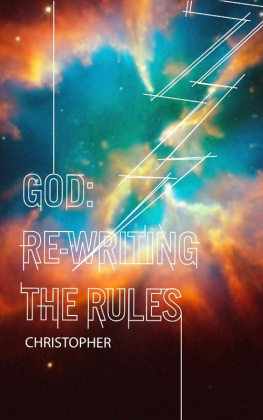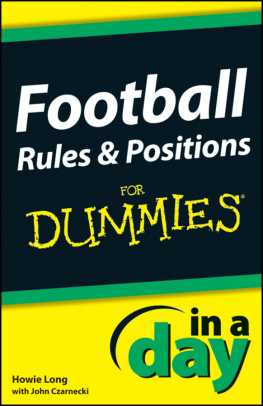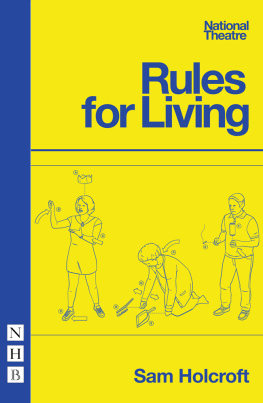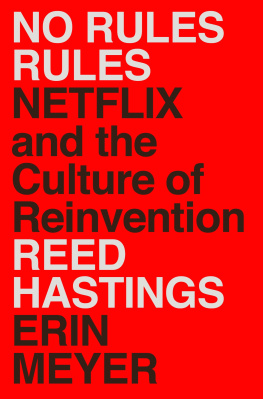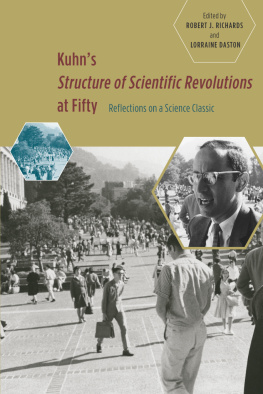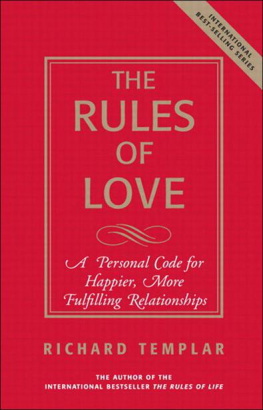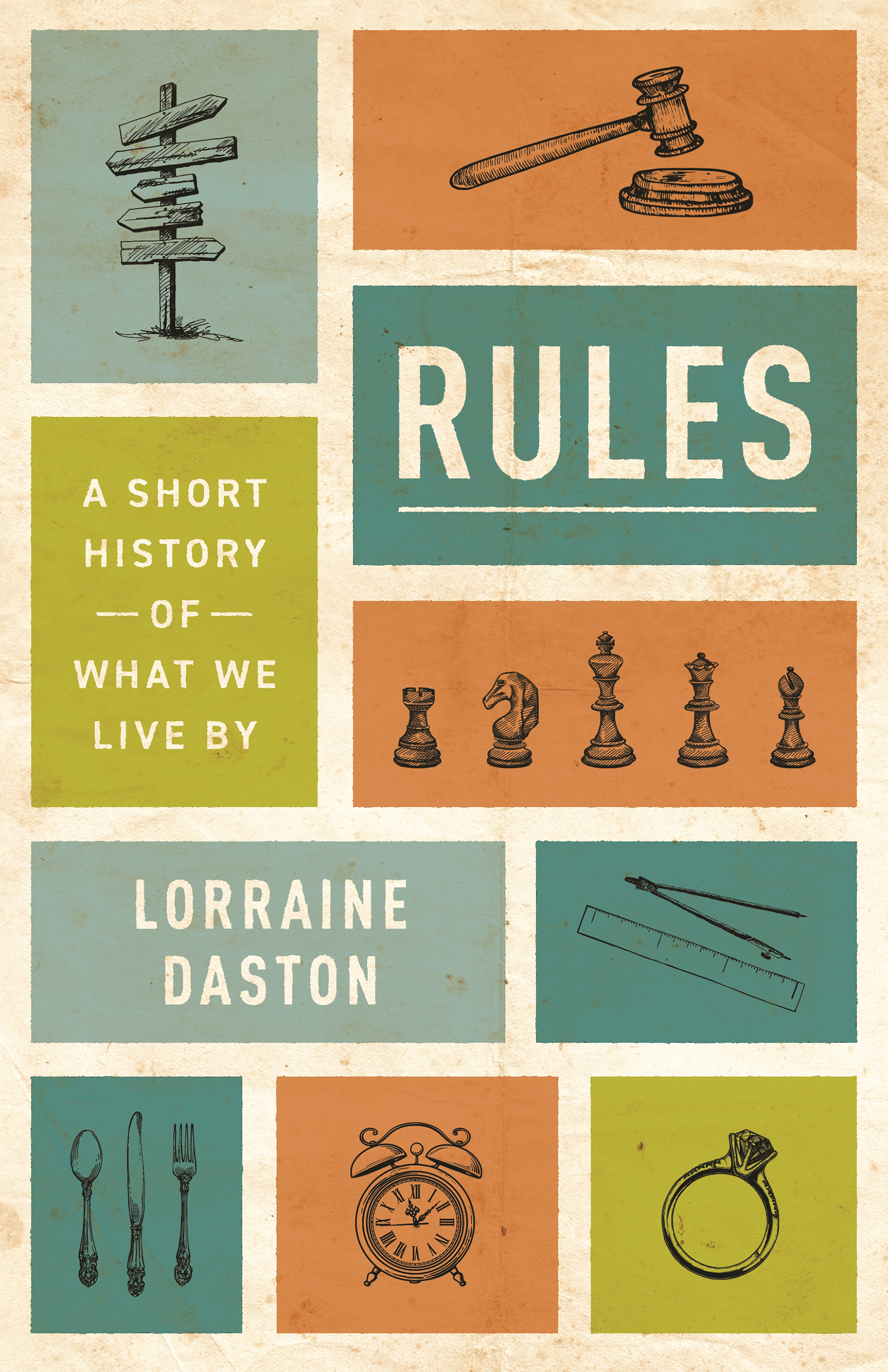RULES
THE LAWRENCE STONE LECTURES
Sponsored by
The Shelby Cullom Davis Center for Historical Studies and Princeton University Press
A list of titles in this series appears at the .
RULES
A SHORT HISTORY OF WHAT WE LIVE BY
LORRAINE DASTON
PRINCETON UNIVERSITY PRESS
PRINCETON & OXFORD
Copyright 2022 by Princeton University Press
Princeton University Press is committed to the protection of copyright and the intellectual property our authors entrust to us. Copyright promotes the progress and integrity of knowledge. Thank you for supporting free speech and the global exchange of ideas by purchasing an authorized edition of this book. If you wish to reproduce or distribute any part of it in any form, please obtain permission.
Requests for permission to reproduce material from this work should be sent to
Published by Princeton University Press
41 William Street, Princeton, New Jersey 08540
99 Banbury Road, Oxford OX2 6JX
press.princeton.edu
All Rights Reserved
Library of Congress Cataloging-in-Publication Data
Names: Daston, Lorraine, 1951 author.
Title: Rules : a short history of what we live by / Lorraine Daston.
Description: Princeton : Princeton University Press, [2022] | Series: The Lawrence Stone lectures | Includes bibliographical references and index.
Identifiers: LCCN 2021048090 (print) | LCCN 2021048091 (ebook) | ISBN 9780691156989 (hardback ; alk. paper) | ISBN 9780691239187 (ebook)
Subjects: LCSH: Authority. | Order (Philosophy) | Algorithms. | Law. | Natural law.
Classification: LCC HM1251 .D37 2022 (print) | LCC HM1251 (ebook) | DDC 303.3/6dc23/eng/20211013
LC record available at https://lccn.loc.gov/2021048090
LC ebook record available at https://lccn.loc.gov/2021048091
Version 1.0
British Library Cataloging-in-Publication Data is available
Editorial: Eric Crahan and Barbara Shi
Production Editorial: Kathleen Cioffi
Text Design: Karl Spurzem
Jacket Design: Faceout Studio, Molly von Borstel
Production: Danielle Amatucci
Publicity: Maria Whelan and Kate Farquhar-Thomson
Copyeditor: Martin Schneider
Jacket images: Shutterstock
To Wendy Doniger, who honored every breach.
CONTENTS
- xi
ILLUSTRATIONS
.J. C. Duffy, Im afraid youve had a paradigm shift (2001)
.Roman copy of Polykleitos, Doryphoros (The Spear Bearer) (1st c. BCE)
.Measured proportions of classical statue (1763)
.Andreas Vesalius, canonical male and female bodies (1543)
.Giant cane plant (Arundo donax) (1885)
.Johann Sadeler, Geometria (late 16th c.)
.Etruscan architectural model of the temple Vulci (c. 300 BCE)
.Giovanni Antonio Bazzi (Il Sodoma), Saint Benedict Eating with Monks (1505)
.Albrecht Drer, polygon construction (1525)
.Hendrik Goltzius, Ars et Usus (1583)
.Elway Bevin, score for canon (1631)
.Hans Sebald Beham, Fortuna (1541)
.Peter Isselburg, City and Fortifications of Mannheim (1623)
.Tommaso Garzoni, Frontispiece (1619)
.Mary Kettilby, Frontispiece (1747)
.Chinese counting rods (202 BC220 CE)
.Old Babylonian mathematical tablet (16501000 BCE)
.Pin manufacture (1765)
.Division of labor in Gaspard de Pronys logarithm workshop
.Textile pattern with Jacquard card transcription (1878)
.Joseph Clement, Plans for Mr. Babbages Great Calculating Engine (1840)
.Charles Babbages Difference Engine No. 1 (18241832)
.Thomas Arithmometer (c. 1905)
.Hollerith punch card operator (c. 1925)
.Operator using Wahl machine (1933)
.Poster featuring calculating prodigy Jacques Inaudi (c. 1890)
.Test results of best operators of Elliott-Fischer machine (1931)
.Women computers at Jet Propulsion Laboratory (c. 1955)
.Matthus Schwarz, accountant for the Fugger banking family (c. 1513)
.Beaked shoes (c. 1470)
.tienne Jeaurat, Le Carnaval des rues de Paris (1757)
.Franois-Jacques Guillote, Numbered fiacres and horses (1749)
.Franois-Jacques Guillote, Machine for retrieving files (1749)
.Nicolas Gurard, LEmbarras de Paris (c. 1715)
.Dani e l Stalpaert, Map of Amsterdam (1657)
.Jean-Baptiste Lallemand, Boulevard Basse-du-Rempart (mid-18th c.)
.John Hart, Orthographie (1569)
.Dame Nature and God, Roman de la rose (c. 1405)
.Alexander von Humboldt, global plant distribution (1851)
.The Father in the Circle of His Family, Represented as the Possessor of Patriarchal Power (c. 1599)
.Samuel de Rameru, Justitia (1652)
RULES
Introduction
THE HIDDEN HISTORY OF RULES
Clues to a Hidden History
This is a short book about a vast topic. We are, all of us, everywhere, always, enmeshed in a web of rules that supports and constrains. Rules fix the beginning and end of the working day and the school year, direct the ebb and flow of traffic on the roads, dictate who can be married to whom and how, situate the fork to the right or the left of the plate, score the runs and walks of baseball games, tame debate in meetings and parliaments, establish what can and cannot be taken on a plane as hand luggage, specify who can vote and when, parse the grammar of a sentence, channel customers into the proper lines at the grocery store, tell pet owners whether their animals are welcome or not, lay down the meter and rhyme scheme of a Petrarchan sonnet, and order the rites of birth and death. And these are just examples of explicit rules, the sort to be found written down on signs and in manuals, handbooks, sacred texts, and legal statutes. Add implicit rules, and the web becomes so densely woven that barely any human activity slips through the mesh: there are the unwritten rules about whether to greet with outstretched hand or two pecks on the cheek la franaise (or one, la belge), how many miles per hour over the posted speed limit will be tolerated without incurring a traffic ticket, how much to tip at what kind of restaurant, when to raise (and lower) ones voice in conversation, who should open doors for whom, how often and how loudly an opera may be interrupted with cheers and boos, when to arrive at and when to leave a dinner party, and how long an epic should be. Cultures notoriously differ as to the content of their rules, but there is no culture without rules, lots of them. A book about all of these rules would be little short of a history of humanity.
Rules are so ubiquitous, indispensable, and authoritative that they are taken for granted. How could there ever have been a society without rules, a time before rules? Yet the universality of rules does not imply their uniformity, either across cultures or within historical traditions. Rules exhibit vertiginous variety not only in their content but also in their forms. The former has been grist for the mill of travelers and ethnographers ever since Herodotuss (c. 484c. 425 BCE) tales of how, from an ancient Greek perspective, in Egypt everything is reversed (though no less regular): the men stay home and weave, while the women go to the market; women urinate standing up, men sitting down; even the Nile runs backwards, from south to north. The latter unfurls in the long list of species that belong to the genus of rules: laws, maxims, principles, guidelines, instructions, recipes, regulations, aphorisms, norms, and algorithms, to name just a few. The variety of these species of rules is a clue to a hidden history of what a rule is and does.




